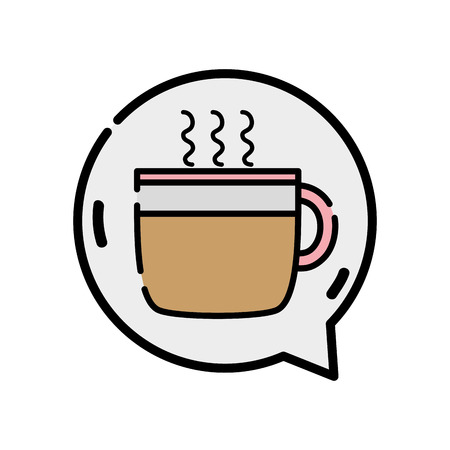1. Comfortable and Functional Seating
When it comes to working remotely from a coffee shop in the U.S., comfortable and functional seating is just as important as fast Wi-Fi. If youre going to spend hours typing away, attending Zoom meetings, or brainstorming your next big idea, your seat needs to support both comfort and productivity.
Why Ergonomic Seating Matters
Ergonomic chairs help reduce strain on your back and neck, especially during long work sessions. While most coffee shops may not offer full-blown office chairs, many are starting to invest in seating that offers decent back support and proper height alignment with tables.
Importance of Table Space
A tiny round table might be fine for sipping lattes, but when youre balancing a laptop, a notebook, and maybe even a second screen or tablet, youll need more room. Coffee shops that provide larger communal tables or deep individual tables tend to attract more remote workers for this very reason.
Variety of Seating Options
No two remote workers are alike. Some prefer a cozy armchair in the corner, while others need a firm seat at a high-top counter. The best work-friendly coffee shops offer a mix of:
- Standard tables and chairs
- Bar-style counters with stools
- Lounge chairs or couches
- Outdoor seating (weather permitting)
Quick Comparison: Seating Types vs. Benefits
| Seating Type | Best For | Pros | Cons |
|---|---|---|---|
| Standard Table & Chair | Laptop Work, Note Taking | Stable surface, ergonomic setup | Might lack cushioning |
| Lounge Chair or Couch | Emailing, Light Reading | Comfortable for short tasks | Poor posture support over time |
| Bar Counter & Stool | Quick Tasks, Charging Devices | Tends to have outlets nearby | Not ideal for long hours |
The Takeaway on Seating
If youre scouting out a new coffee shop for remote work, take note of the seating options before settling in. A well-designed space can make a huge difference in how productive—and comfortable—your day will be.
2. Consistent Noise Levels and Ambience
When youre working remotely from a coffee shop, the sound environment can make or break your focus. Sure, Wi-Fi is important, but if the shop is too loud or too quiet, it can be just as distracting. Finding a place with balanced noise levels—think light background music mixed with the hum of conversation—can help you stay in the zone.
Why Noise Levels Matter
Too much noise, like blaring music or loud conversations, can pull your attention away from work. On the flip side, a coffee shop thats dead silent might feel awkward or even make you self-conscious during video calls. The sweet spot is a place that has a steady buzz—not too noisy, not too quiet.
What to Look for in Ambience
Ambience goes beyond just sound. It includes lighting, seating comfort, and overall vibe. But when it comes to noise specifically, here’s what remote workers usually prefer:
| Sound Element | Ideal Setting for Remote Work |
|---|---|
| Background Music | Soft instrumental or chill playlists at low volume |
| Customer Conversations | A steady hum of casual chatter without shouting |
| Coffee Equipment Noise | Occasional sounds are fine, but not constant grinding or steaming |
| Seating Area Acoustics | Cushioned furniture or rugs to absorb excess echo |
The “Coffee Shop Soundtrack” Effect
Interestingly, many remote workers find moderate ambient noise actually helps them concentrate. Thats why some people play “coffee shop background noise” at home! A well-balanced soundscape creates just enough distraction to keep your brain engaged without overwhelming it.
Pro Tip:
If youre checking out a new café, spend a few minutes just listening before unpacking your laptop. If the vibe feels right and you can imagine yourself getting things done there, youre probably in a good spot.
Bottom Line on Ambience
A consistent and balanced noise level helps set the tone for productivity. When choosing a coffee shop for remote work in the U.S., think beyond Wi-Fi—sound matters more than you might think.

3. Availability of Power Outlets
For remote workers in the U.S., a steady Wi-Fi connection is just the beginning. The real MVP? Easy access to power outlets. When youre spending hours working at a coffee shop, your laptop or phone battery is bound to run low. That’s why charging options—whether at every table or thoughtfully placed around the space—are absolutely essential.
Why Charging Access Matters
Imagine finding the perfect cozy corner with great lighting and a strong Wi-Fi signal, only to realize theres no outlet nearby. Suddenly, that dream setup turns into a ticking clock on your devices battery life. Remote workers need to know they can plug in without playing musical chairs or awkwardly stretching cords across walkways.
What Makes for Good Outlet Accessibility?
| Feature | Why It Matters |
|---|---|
| Outlet at Every Table | No competition for charging; ideal for long work sessions |
| USB Ports Included | Convenient for phone/tablet users without bulky adapters |
| Strategically Placed Power Strips | Makes use of wall space without cluttering walkways |
| Clearly Marked Outlets | Saves time searching; easy to plan seating choice |
The Bottom Line for Remote Workers
If a coffee shop wants to attract freelancers, students, and digital nomads, making sure there are enough outlets—and that theyre easy to find—is key. Its not just about convenience; its about creating an environment where people can focus on their work without worrying about running out of juice halfway through a meeting or deadline.
4. Quality Coffee and Diverse Menu Options
While free Wi-Fi might bring remote workers through the door, its the quality coffee and thoughtful menu that keep them coming back. For many Americans working remotely from coffee shops, great-tasting drinks and a variety of food choices are essential for staying focused, energized, and comfortable during long work sessions.
Well-Crafted Beverages Make a Difference
Coffee isn’t just a caffeine fix—it’s part of the experience. A well-made latte or pour-over can be both comforting and invigorating. Remote workers tend to appreciate when baristas use high-quality beans, offer non-dairy milk options, and craft beverages with care. Specialty drinks like cold brews, matcha lattes, or seasonal offerings can also add variety to the day and give people a reason to return.
Diverse Menu Options for Every Diet
Having food options that cater to different dietary needs is another big plus. Whether someone is vegan, gluten-free, keto, or just looking for something light, having inclusive choices makes a coffee shop feel welcoming and accommodating.
| Dietary Preference | Ideal Menu Items |
|---|---|
| Vegan | Avocado toast, oat milk lattes, plant-based wraps |
| Gluten-Free | Salads, protein bowls, gluten-free pastries |
| Keto/Low-Carb | Egg bites, meat & cheese snacks, unsweetened drinks |
| Vegetarian | Grain bowls, veggie paninis, smoothies |
Fueling Focus and Productivity
A balanced snack or meal helps maintain energy levels throughout the day. Many remote workers structure their work around meal breaks—starting with a strong coffee in the morning, grabbing a sandwich or salad at lunch, and maybe enjoying a cookie or muffin in the afternoon. This kind of full-service menu encourages longer stays and builds loyalty among digital nomads.
The Bottom Line for Coffee Shops
If youre setting up your space to attract remote workers in the U.S., dont overlook what’s on the menu. Quality drinks paired with inclusive food options can turn your café into more than just a stopover—it becomes a workspace people look forward to returning to.
5. Community and Atmosphere
When it comes to working remotely from a coffee shop, the vibe of the place can be just as important as the Wi-Fi speed. In the U.S., many remote workers are drawn not only by good coffee and internet but also by the sense of belonging that a welcoming space provides.
Why Atmosphere Matters
A coffee shop with a warm, inviting atmosphere helps remote workers feel more comfortable and focused. Soft lighting, cozy seating, and ambient music all contribute to creating a space where people can settle in and get work done. Its not just about aesthetics—its about how a place makes you feel when youre spending hours there.
The Role of Friendly Staff
Baristas who remember your name or your regular order make a big difference. Friendly interactions—even short ones—can boost your mood during a long day of solo work. This kind of customer service turns a coffee shop into your “third place”—somewhere between home and work where you feel connected.
Building a Remote Work Community
Coffee shops that encourage community often become informal coworking spaces. Some cafés even host events like “freelancer Fridays” or local networking meetups to bring people together. These shared experiences create opportunities to connect with others, which is especially valuable for freelancers or remote workers who might otherwise feel isolated.
Key Elements That Foster a Supportive Environment
| Element | Impact on Remote Workers |
|---|---|
| Welcoming Culture | Makes customers feel valued and at ease, reducing stress while working. |
| Friendly Staff | Creates positive daily interactions that boost morale. |
| Sense of Community | Encourages networking, collaboration, and combats loneliness. |
Takeaway
A coffee shop isn’t just about caffeine—it’s about connection. In the U.S., places that foster community and provide a welcoming atmosphere are more likely to attract loyal remote workers who return day after day not just for the lattes, but for the people and environment that support their daily grind.
6. Remote Work-Friendly Policies
While fast Wi-Fi and plenty of outlets are great, remote workers in the U.S. also pay close attention to a coffee shop’s policies. The way a café manages time limits, purchase expectations, and basic amenities can make or break its appeal to freelancers and digital nomads.
Time Limits: How Long Is Too Long?
Some coffee shops set time limits for how long customers can stay—especially during peak hours. While this helps manage space, it can be a downside for remote workers who need several uninterrupted hours of work time.
| Policy Type | Description | Remote Worker Appeal |
|---|---|---|
| No Time Limit | Customers can stay as long as they want with a purchase. | Highly attractive for long work sessions. |
| 2–3 Hour Limit | Stay limited to 2–3 hours per visit, often during busy times. | Moderately appealing; good for shorter tasks or meetings. |
| Strict Limit with Monitoring | Timers or staff enforcement used to track stay duration. | Less appealing; may feel unwelcoming. |
Minimum Purchase Expectations
Many cafés expect customers to make purchases if they’re staying for extended periods. This is reasonable, but the clarity and flexibility of this expectation matter a lot to remote workers.
- Clear Signage: Signs that state “One drink per hour” or similar help set fair expectations without awkward confrontations.
- Loyalty Programs: Some shops offer discounts or rewards for frequent buyers, which encourages longer stays while supporting the business.
- No Pressure: Cafés that allow customers to nurse one drink for hours are often favorites among students and writers on a budget.
Restroom Access: A Basic Need
This might seem minor, but easy access to clean restrooms is essential. Some U.S. cafés restrict restroom use to paying customers only or require a code from your receipt—a policy that’s understandable but may create friction if not communicated clearly.
Common Restroom Policies in U.S. Coffee Shops:
| Policy | Description | User Experience |
|---|---|---|
| No Code Required | Restroom open to all guests without restriction. | Smooth and welcoming experience. |
| Code on Receipt | A purchase is needed to access the restroom; code printed on receipt. | Fair but requires clear communication. |
| Key from Counter | You must ask staff for a key, usually after buying something. | Slightly inconvenient but manageable. |
The Takeaway on Policies
Coffee shops that clearly communicate their policies—and apply them with a touch of hospitality—tend to attract more loyal remote workers. When freelancers know what to expect, they’re more likely to settle in, order more, and return again and again.


